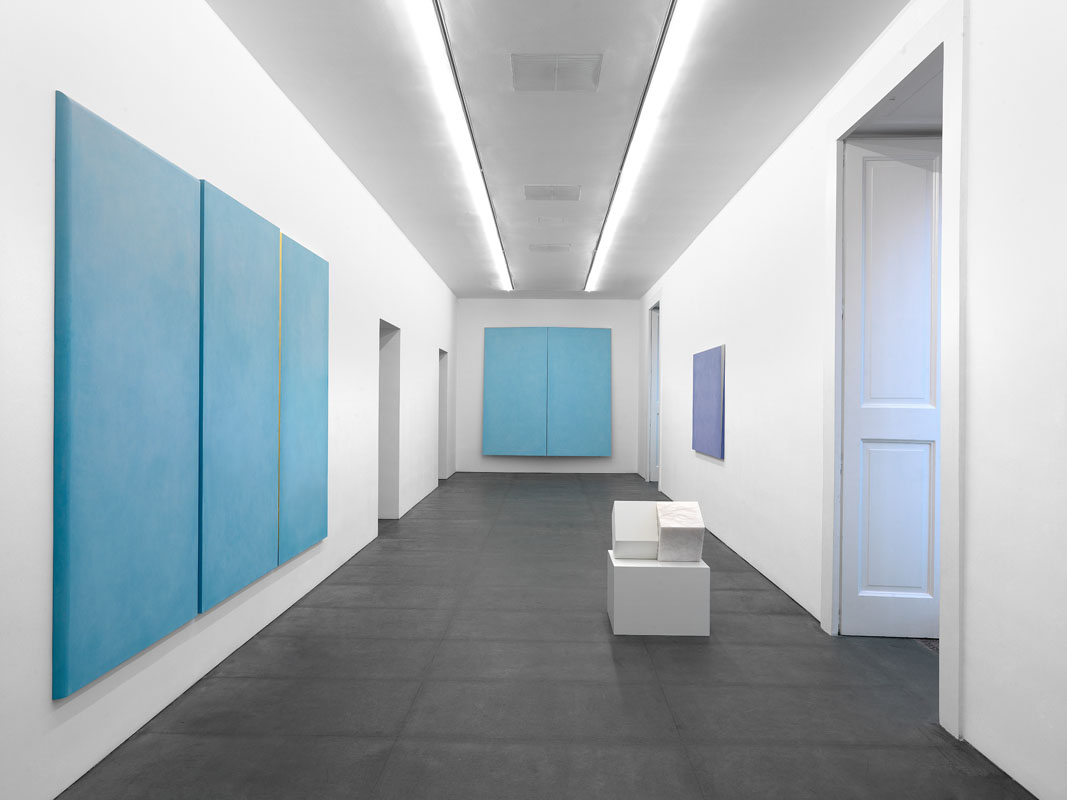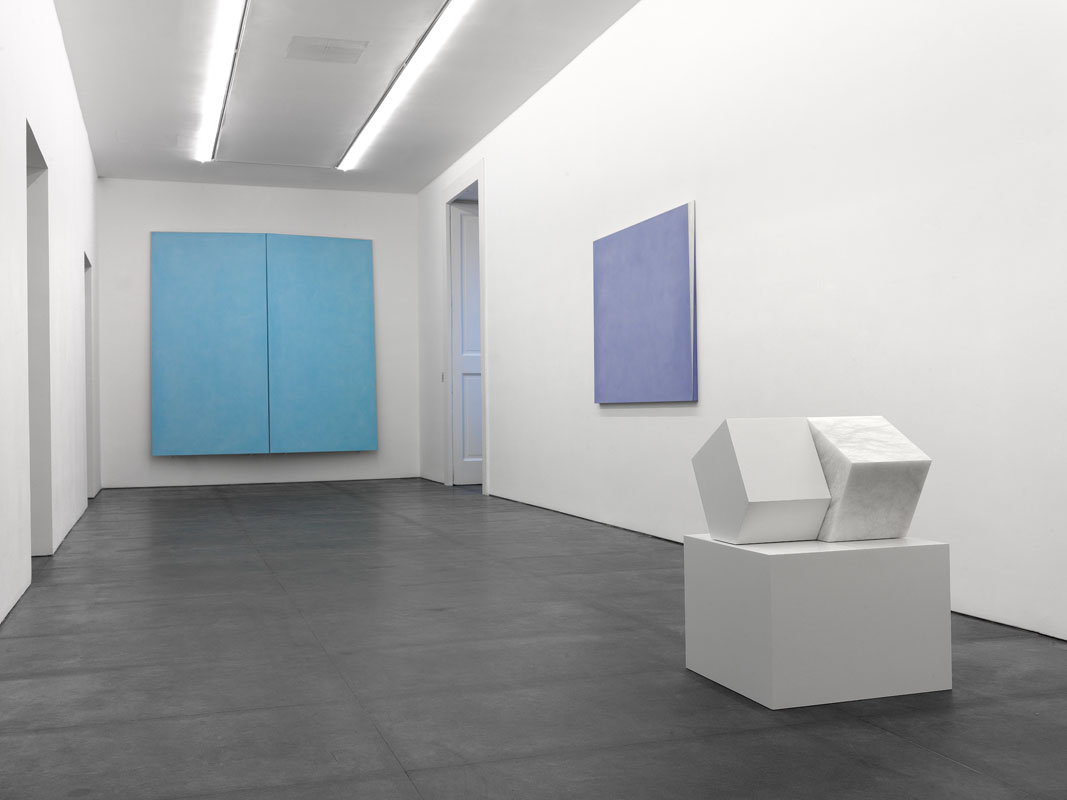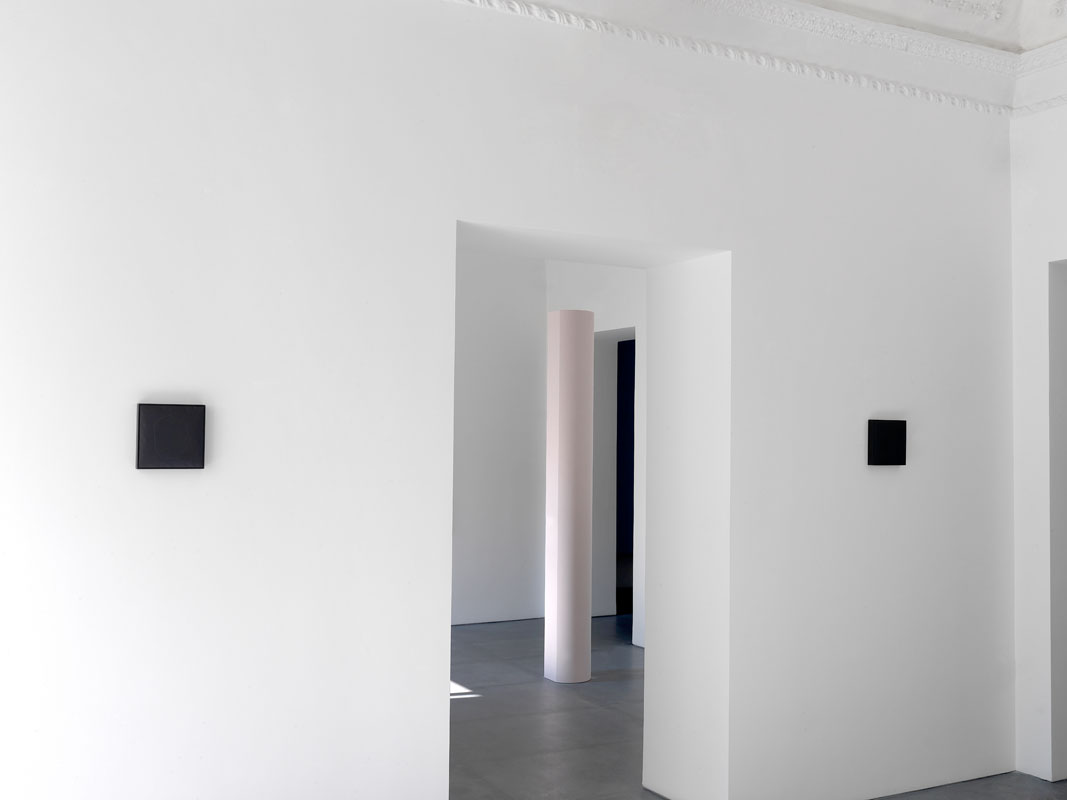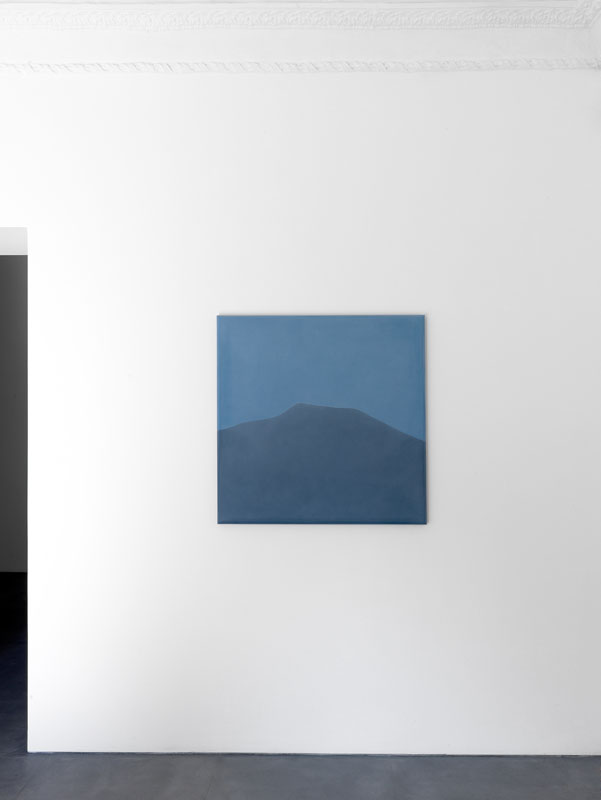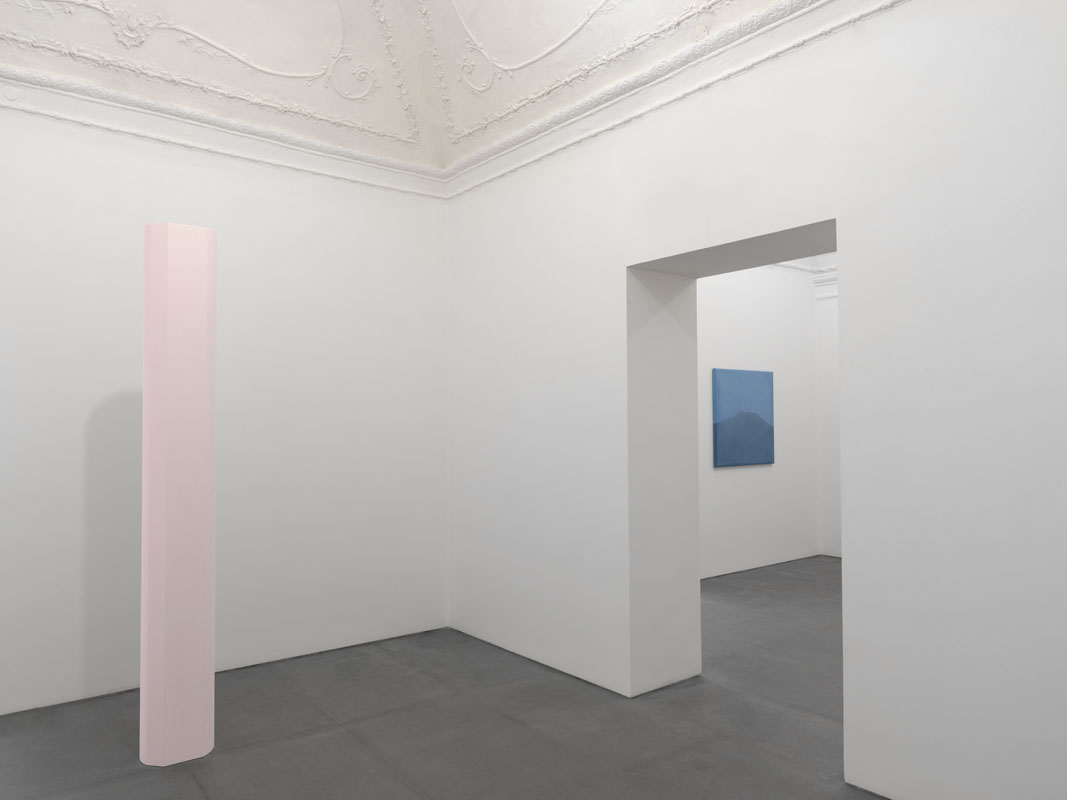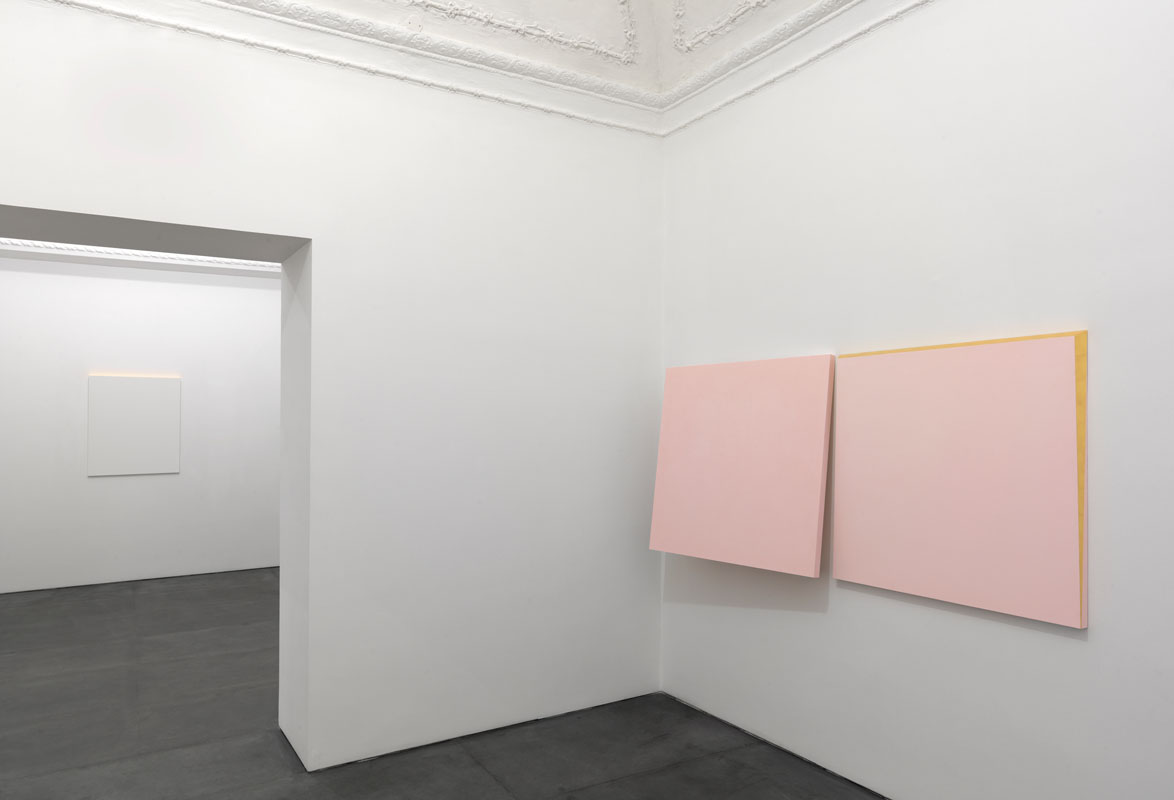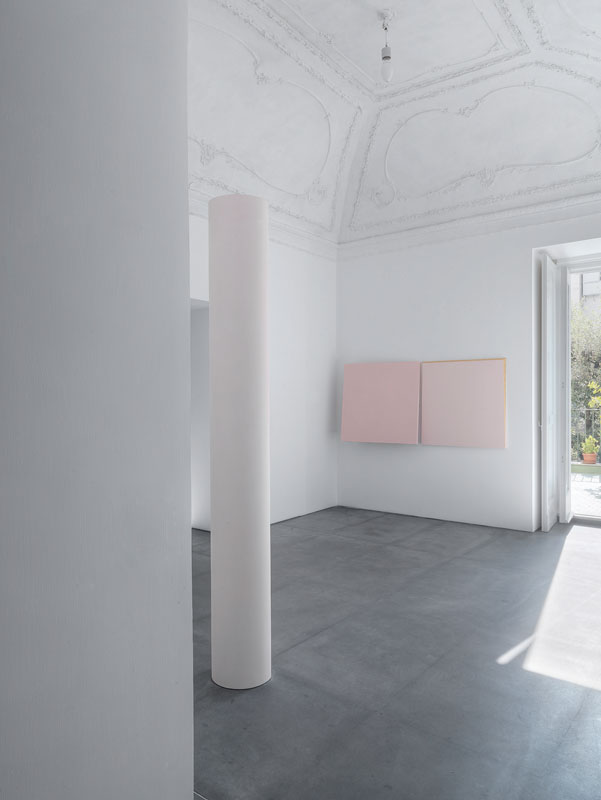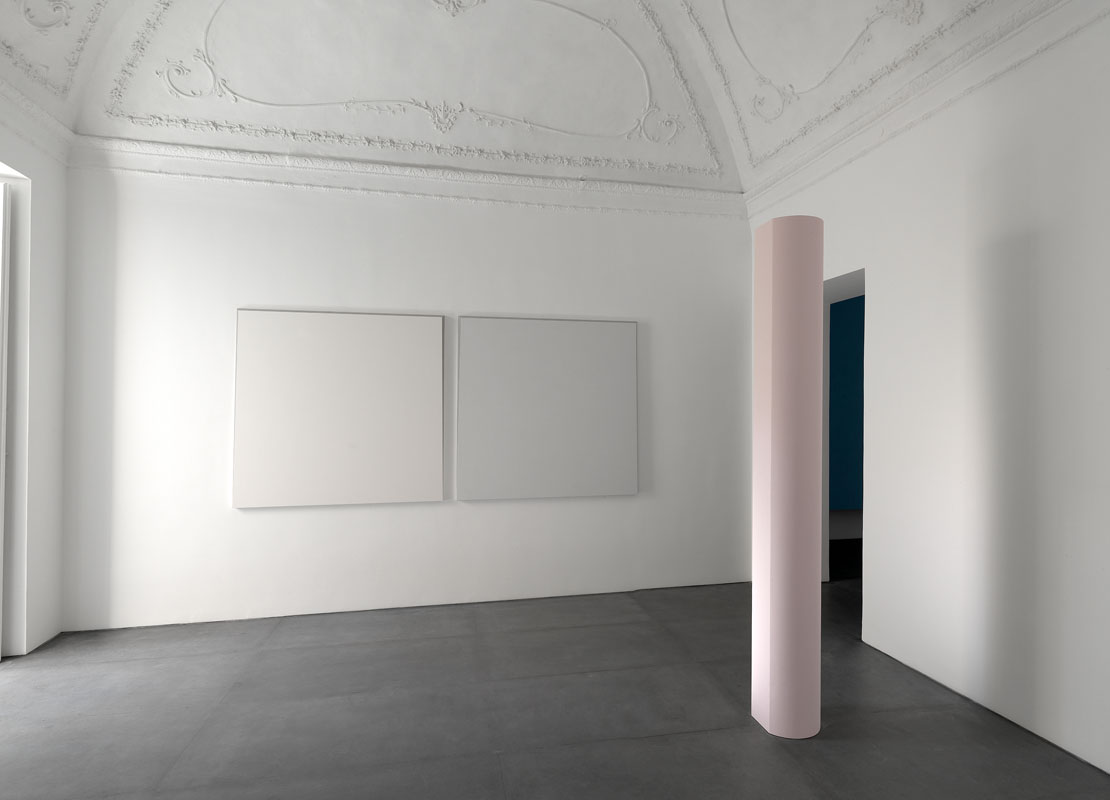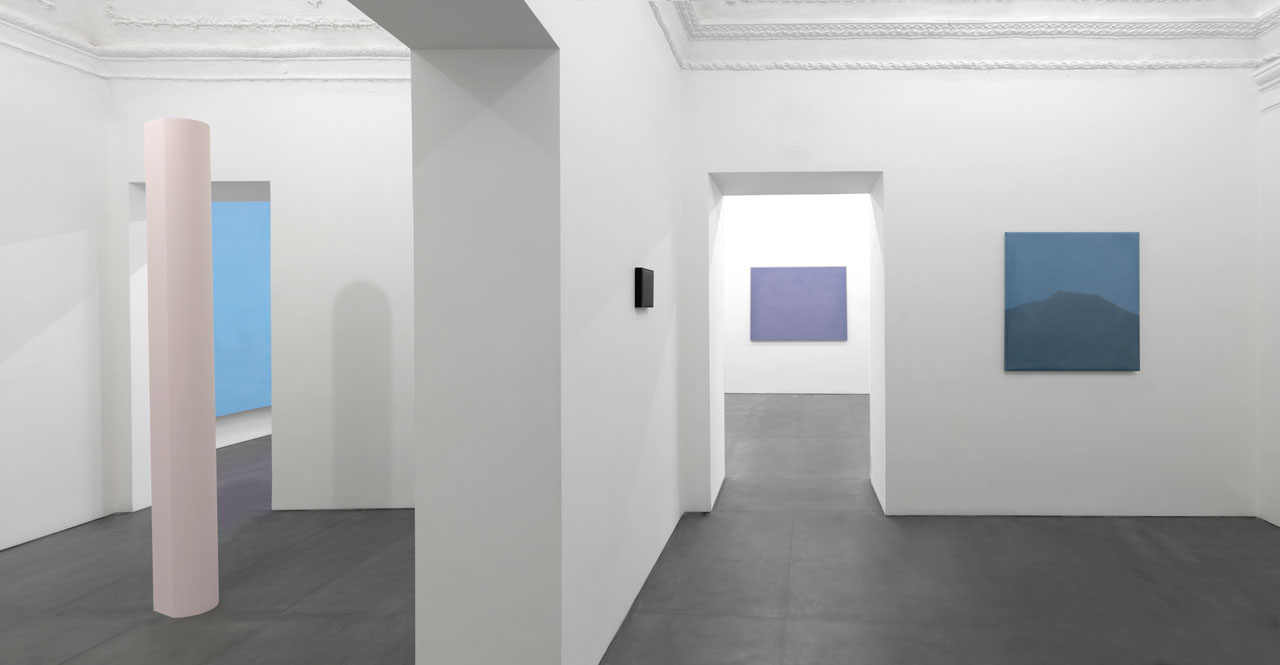One day I saw Spalletti arranging his easels in the studio in a different fashion. I asked him why. He replied that he was working on the exhibition for the Lia Rumma gallery in Naples. He wanted the space to be emptied and the floor to be washed. I observed him as he walked around the studio in search of light and shadow as if he was trying to find an image and then liberate himself from it the very next moment. The geometry of the studio gradually was decomposed by the regular edges of the easels. I felt that he had already defined a sequence although I still could not understand it. Spalletti prepared the paintings meticulously. The rear of the painting was covered because he does not like smudges. He paints with the canvas placed horizontally; he explains that in this way the paint can be spread on more evenly: “the paint is spread, it dries, thickens and settles”. The paint is applied to the canvases, almost at the same hour, for ten or fifteen days, until it reaches a thickness that makes it impossible to understand whether “the colour of the surface is moving towards the inner part of the painting or whether the inner part is moving towards the outside”. The drying times creates the slightly loose-textured effect that appears on the surface. He began to position the paintings on the easels. Each painting had a different format and was prepared with a different frame, some of them tapered, some embossed, others thin on one side and thick on the other. I was unable to grasp the overall design. So Spalletti began to define the first colours, one by one, and spread them on, one after the other. While he was preparing the paint, his clothes were not touched by the paint. The gestures were meditated and the quantities were carefully chosen. The first colours were delicate, a very light pink, a watery blue, followed by crimson, then grey which “manages to absorb more than all the other colours” and, lastly, the white on the vertical idea of the column and on the alabaster, which is only half-painted. However, the colours were still not intelligible; only after the abrasion, when the pigments break up and are distributed like powder paint on the painting, the white of the chalk contained in the mixture begin to make them resonate. When the paints suddenly became clear in their definitive chromatic sense, Spalletti looked at me with a half-smile and said, “d’incanto l’incanto di aver trovato una foglia di acanto” (as if by some enchantment, the enchanting discovery of finding an acanthus leaf). The glitter of the gold leaf or the rotundity of the silver substance settled on the frames. The paintings, arranged one beside the other, left the viewer to guess the meaning; then, once they had been placed on the wall, one behind the other, they suddenly manifested themselves with the entire force of their presence. The pattern of the frames determined the movement, the gold began to be reflected on the wall, the colour travelled on them. At that moment, as if in a vision, all was revealed. Everything that I had previously been unable to comprehend stood before me as a unified whole”. It was only then that Spalletti told me that his intention was to make the colours run along the walls of the gallery “like painting a single picture”.
Azzurra Ricci

